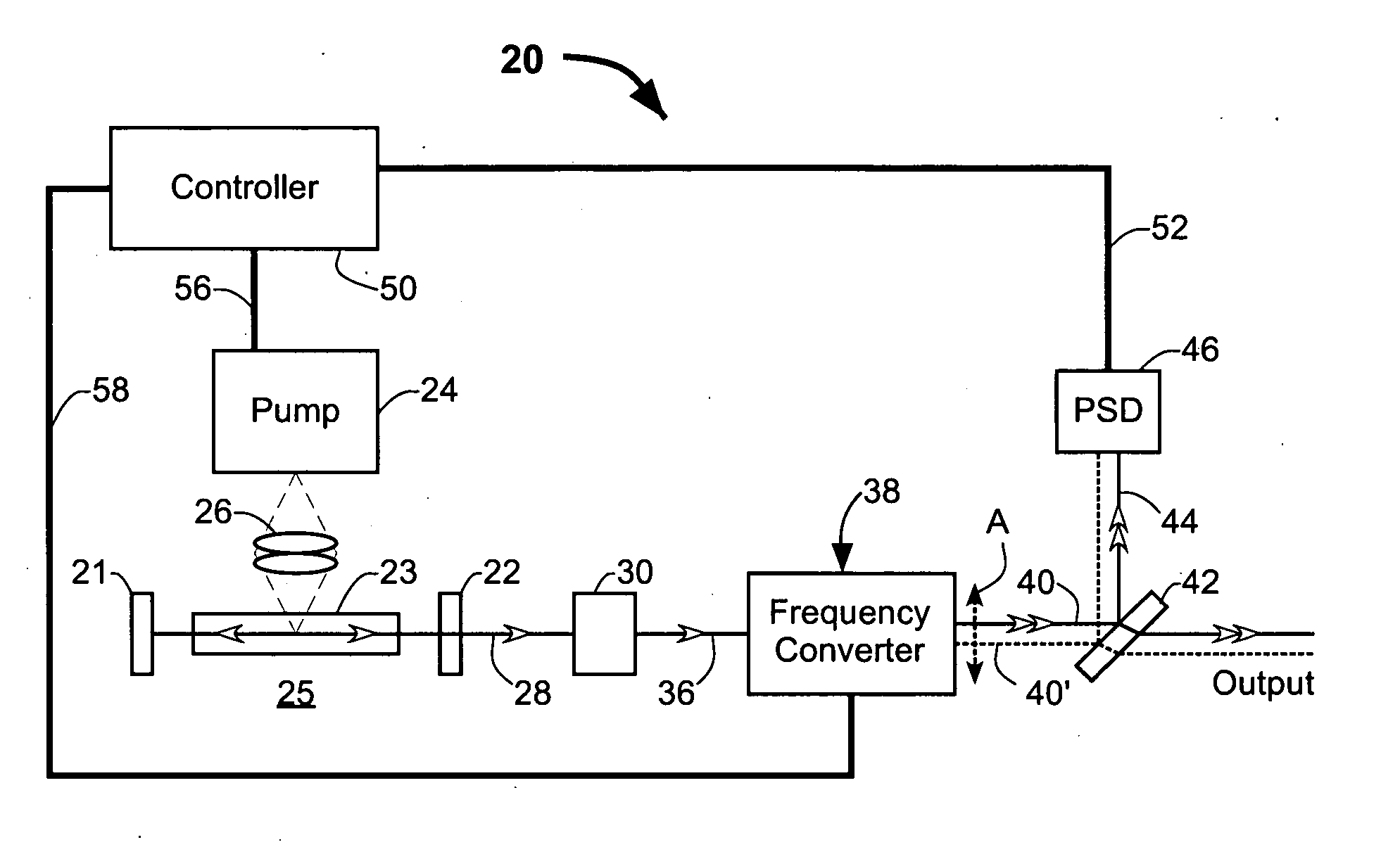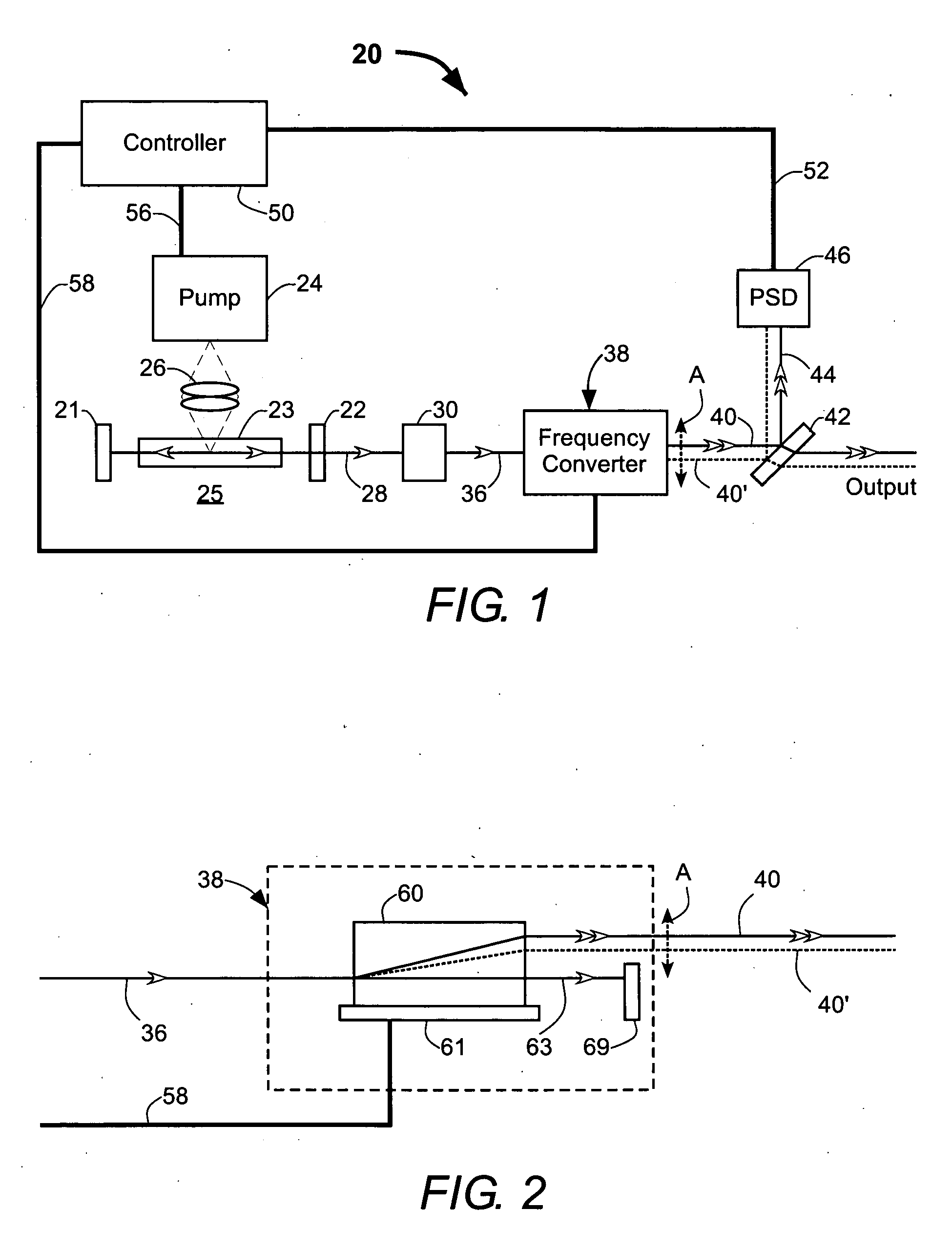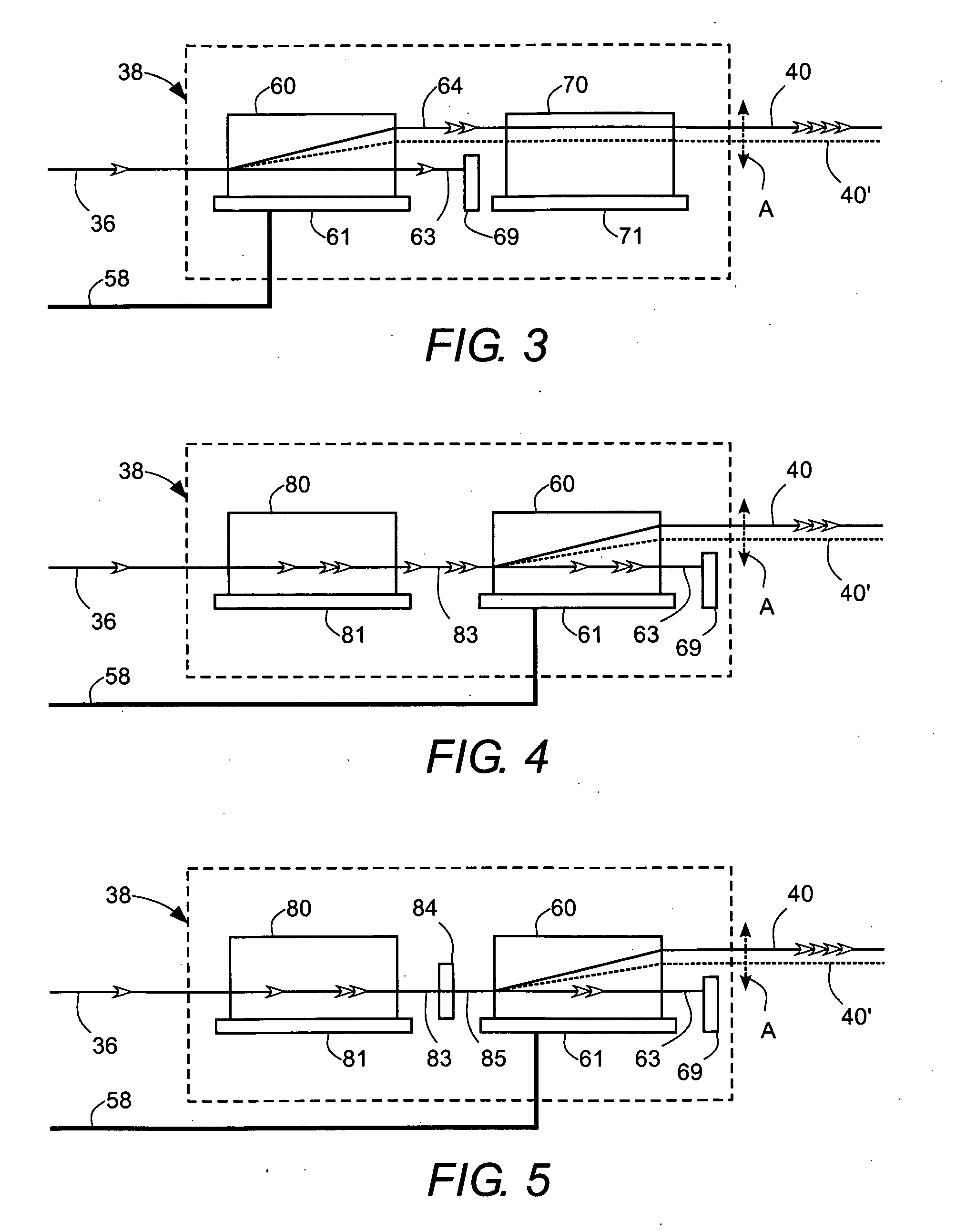Stabilized frequency-converted laser system
a laser system and frequency conversion technology, applied in the direction of laser details, instruments, electrical equipment, etc., can solve the problems of dpss laser frequency conversion output power degrade, etc., to achieve the effect of improving the stability of the laser system
- Summary
- Abstract
- Description
- Claims
- Application Information
AI Technical Summary
Benefits of technology
Problems solved by technology
Method used
Image
Examples
Embodiment Construction
[0026] Referring now to the drawings, wherein like features are designated by like reference numerals, FIG. 1 schematically illustrates one preferred embodiment 20 of a frequency-converted laser system in accordance with the present invention. Laser system 20 includes a laser resonator 25 formed between mirrors 21 and 22. Laser resonator 25 includes a gain medium 23 energized by a pump system 24. Pump system 24 is arranged in optical communication with the gain medium 23 through a pump delivery apparatus 26. In response to the energizing of the gain medium, laser resonator 25 generates and delivers a fundamental beam 28 having a fundamental wavelength.
[0027] Pump delivery apparatus 26 is depicted in FIG. 1, for convenience of illustration, as supplying energy to gain medium 23 from the side of the fundamental beam-path (side-pumping). Side-pumping should not be considered as limiting the present invention since pump light can also be delivered predominantly along the axis of propag...
PUM
 Login to View More
Login to View More Abstract
Description
Claims
Application Information
 Login to View More
Login to View More - R&D
- Intellectual Property
- Life Sciences
- Materials
- Tech Scout
- Unparalleled Data Quality
- Higher Quality Content
- 60% Fewer Hallucinations
Browse by: Latest US Patents, China's latest patents, Technical Efficacy Thesaurus, Application Domain, Technology Topic, Popular Technical Reports.
© 2025 PatSnap. All rights reserved.Legal|Privacy policy|Modern Slavery Act Transparency Statement|Sitemap|About US| Contact US: help@patsnap.com



